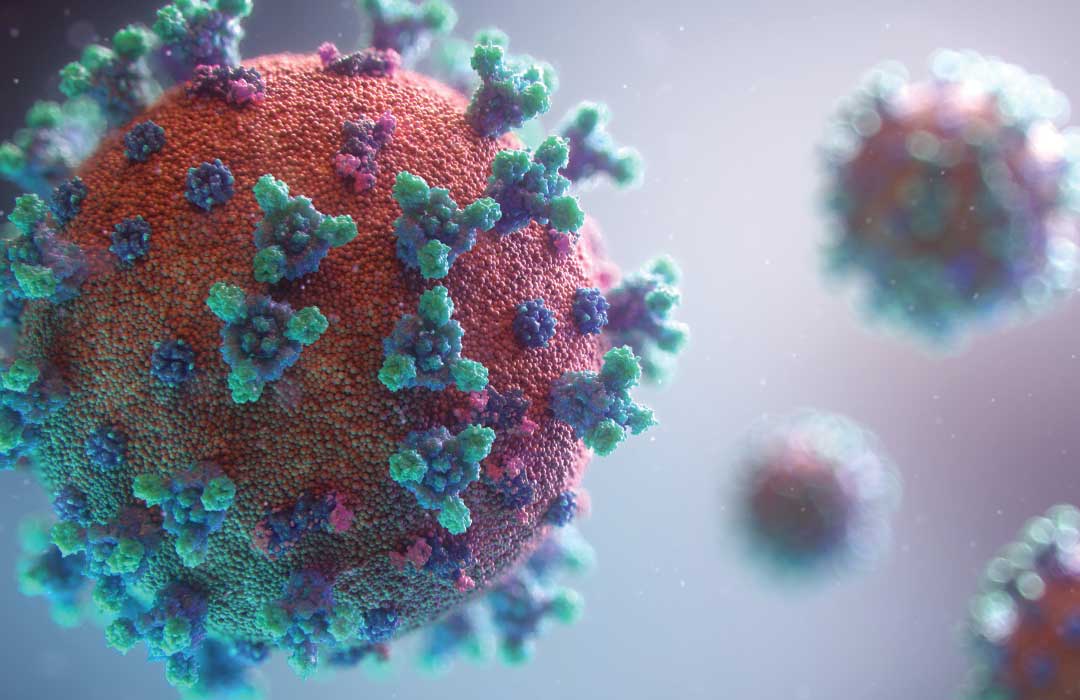Viruses In Our Recreational Lakes, Rivers, And Streams

Are There Viruses In Our Recreational Lakes, Rivers, And Streams?
You don’t have to worry about waterborne viruses.
Chances are, if you’ve done any sort of traveling, trekking hiking and backpacking, canoeing and kayaking or fishing and hunting, etc. you’ve heard those words from a retailer. They'll tell you that all you need is a good filter system to purify your drinking water. I don’t blame them. For decades I believed it myself. But there is new information to show that waterborne viruses are much more common than we’ve been led to believe.
Positive Detection
The University of California published a study investigating human viral contamination of urban rivers and its impact on coastal beaches. The study found that adenovirus was detected in about 52% of the samples taken, enterovirus in about 13%, and hepatitis A in about 76% of the samples. Viral contamination was found in 50% of the rivers and creeks tested. Most recently, researchers showed that human virus contamination was widespread in Southern California coastal rivers and streams our current investigation shows that the Los Angeles and San Gabriel Rivers are contaminated with high levels of fecal indicator bacteria and human viruses.
Similar results were found in recreational parks along the Grand River in Michigan. Over several sampling periods from 2005 to 2007, adenovirus was detected in 16% to 66% of surface samples. This study concluded that human adenovirus was consistently detected in sewage and occasionally detected in rivers receiving sewage effluent. “This research demonstrates that… wastewater-impacted surface waters in the lower Grand River in Michigan contain high levels of viruses…
Yet another study noted: Adenoviruses have been detected in various waters worldwide including wastewater, river water, oceans, and swimming pools. Adenoviruses typically outnumber the enteroviruses when both are detected in surface waters. [One study] found that 38% of 29 surface water samples were positive for infectious Ad40 and Ad41.
Prevalence
There is mounting evidence from reliable sources that waterborne viruses are much more prevalent than anyone including the experts ever realized. Viruses like noroviruses, hepatitis A, hepatitis E, rotaviruses, enteroviruses, adenoviruses, and astroviruses, as well as avian influenza (or H5N1, the so-called bird flu) are present in surface water sources such as rivers and lakes around the world including Canada and the US.
That may be because there is more raw sewage entering our waterways than perhaps the average person realizes. A report released in 1999, for example, revealed that five cities in Canada dumped a combined total of 365 million litres of untreated sewage every day. Eleven other cities in the country dumped 437 million litres combined via by-passes and sewage overflow systems. Other instances showed only minimal treatment, i.e. skimming the water for solids.4 And where UV disinfection of sewage is in place, communities such as Thunder Bay, ON Canada population 110,000) choose to operate it on a seasonal basis, only treating from April to October. This has serious implications as the persistence of viruses, especially in cold water can extend as long as 270 days 5.
There are examples all over the world, including cases in Germany 6 and Finland 7, of insufficiently treated water leading to outbreaks of disease caused by waterborne viruses. The World Health Organization (WHO) has also documented many international outbreaks, particularly in third-world countries 8.
Even if sewage water is treated by municipalities, that doesn’t always mean disinfected using chlorine or UV. There are actually four main treatment methods, all of which may vary in quality from one facility to the next. One study in the US found that norovirus was found in 58% of raw sewage; 8% of treated effluent contained either noroviruses or enteroviruses, and adenovirus was detected in 25% of the samples. Some type of virus was found in 100% of raw sewage 9.
Avian or bird flu is also present in our waterways. According to the WHO, the Avian influenza virus has been isolated from unconcentrated water from six lakes in Canada. This is fairly alarming since, as the WHO puts it, There are no quantitative data available on levels of H5N1 virus in lake water where waterfowl gather, although its detection in unconcentrated water and in small sample volumes suggests that levels are relatively high 10.
Persistence
Obviously then, there is plenty of opportunity for viruses to be transmitted into our natural water sources. But another factor to consider is how long the virus can survive in the environment. Although it cannot replicate outside of a host, it turns out viruses can remain viable in water sources for a relatively long time. One study found that an avian flu virus persisted resuspended in Mississippi River water for 30 days at zero degrees Celsius 11. Another study on the waterborne transmission of Influenza A among wild duck populations reported that viruses could persist in lab samples at 4 degrees Celsius for 270 days 12.
Data from this last study seemed to indicate that persistence increased as the temperature dropped. In other words, viruses are more likely to persist in cooler lakes, streams, and rivers which is the usual water source for outdoor sport enthusiasts. Adenoviruses in particular seem to be persistent, and indeed the study on the Michigan River mentioned above noted that high concentration of adenovirus detected was likely linked to its persistence 13.
Recognition of the Problem
The Influenza A study is also noteworthy in that it states outright there hasn’t been much research into viral persistence or even presence in our waterways. Water isolated viruses have rarely been genetically characterized and evaluation for persistence in water and infectivity in natural hosts has never been documented 14. Part of the reason most certainly is because, as mentioned above, it is so difficult to detect.15 Researchers continue to look for reliable indicators like a co-existing bacteria that would help show the presence of a viral infection in the water, but these remain elusive. In fact:
In Southern California, 33% of marine samples were positive for adenoviruses. Most-probable-number (MPN) concentration estimates indicated that there were 880 to 7,500 adenoviruses per litre of water. These marine sites were located outside of river discharge points, and the authors noted that… bacteria indicators did not correlate with the presence of viruses 16.
Further, it’s difficult to get a clear picture of the problem since outbreaks of waterborne disease can be sporadic, can affect as few as one person, and often go unreported. The Centers for Disease Control and Prevention (CDC) notes four main limitations to collecting accurate data on waterborne diseases for one of its reports, including the fact that reported outbreaks don’t always have follow-up testing with the water (or, at least, test results are not included with the outbreak data) 17.
Even if nobody can yet quantify the problem, at least researchers are getting a better idea of its scope. One 2002 study states explicitly:
These enteric viruses have infrequently been identified as the etiologic agents of waterborne disease outbreaks, because of inadequate diagnostic technology, but many outbreaks of unknown etiology currently reported are likely due to viral agents. Actually, Norwalk virus and Norwalk-like viruses are recognized as the major causes of waterborne illness worldwide.Â18
In another report, compiled data indicated that almost half of the fresh water used for drinking water in the United States is contaminated with human enteric viruses, which the study’s author thought to be low. Studies of treated water found positive sample in four of nine studies which the author again suggested may underestimate actual contamination levels due to insensitive detection procedures and other limitations 19.
Experts including Health Canada and the CDC are just now understanding the full scope of the problem. Although viruses have been associated with waterborne outbreaks, their importance as waterborne pathogens has only recently been recognized,Health Canada states. Many of the enteric viruses cause unapparent infections and thereby remain unreported. Although viruses have been associated with waterborne outbreaks, their importance as waterborne pathogens has only recently been recognized. As detection methods improve and with increased epidemiological surveillance, the role of viruses as waterborne pathogens is becoming increasingly recognized 20.
In at least one case, waterborne viruses in a recreational area were linked to an outbreak of Norovirus. In July 2012, over 200 people who swam in Wazee Lake, WI reported symptoms consistent with Norovirus, and the Jackson County Health Department identified Norovirus in samples taken from ill persons 21.
Conclusion
There is a growing body of scientific work indicating that viruses are present in many of our lakes, rivers and streams. As we seen in this paper, viruses like Norovirus, Adenoviruses, and Avian Influenza are now taken seriously by health agencies around the world including Health Canada, the CDC in the United States, and WHO. Health Canada has stated explicitly that the role of viruses as waterborne pathogens is becoming increasingly recognized in Canadian waters.
The presence of waterborne enteric viruses is directly related to fecal contamination from people or in some cases waterfowl such as ducks. While many remote lakes, rivers, and streams may not be subject to human fecal contamination, those considering surface water sources for drinking water should always be aware of their surroundings. Are there cities, towns, or other human activities upstream of your location discharging untreated or under-treated sewage into the water source? Are you drawing water from near a beach or area used for recreational purposes? Are there populations of waterfowl in the area? If the answer to any of these questions is yes, then viruses may be present.
Some of the best recreational-use, portable water filters will remove sediment, bacteria and protozoan cysts down to 0.1-0.2 microns but even that isn’t fine enough to remove viruses. For maximum protection against all microbiological contaminants, a combined system of microfiltration followed by disinfection with simple and easy-to-use chlorine tablets is recommended. Considering that chlorine tabs are inexpensive, do not have an unpalatable taste or odour, and are easy to carry, it is a relatively simple way to inactivate viruses in drinking water taken from recreational waterways. Water Filter Viruses.


